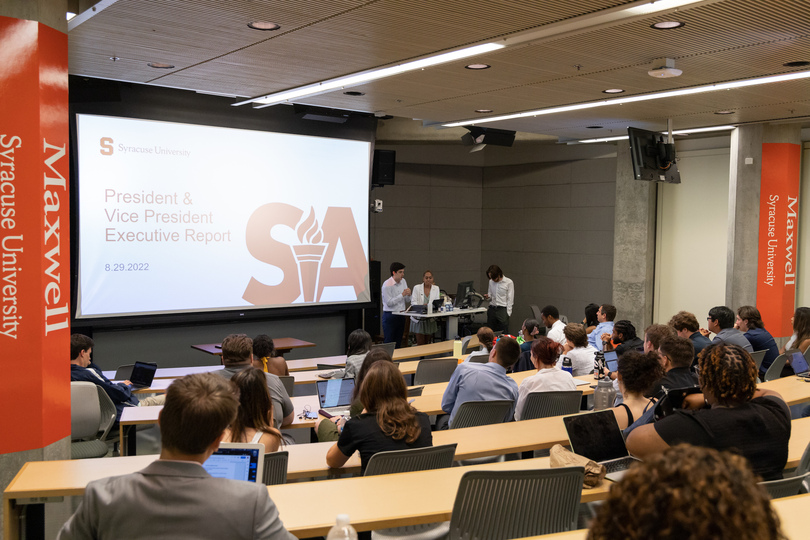SA makes efforts to achieve carbon neutrality earlier than 2040 deadline

SA wants to see SU's 2040 carbon neutrality deadline moved up as part of a larger update to the thirteen-year-old climate plan. Nina Gerzema | Assist. Photo Editor
Get the latest Syracuse news delivered right to your inbox.
Subscribe to our newsletter here.
In 2009, Syracuse University committed to become carbon neutral by 2040 as part of its Climate Action Plan.
Current Student Association leaders want to see that deadlined moved up as part of a larger update to SU’s thirteen-year-old climate plan.
The plan, which has the same deadline as similar programs at the University of Michigan and New York University, would bring net university greenhouse gas emissions from 95,269 metric tons in 2020 to 0 in 2040.
But SA is pushing a closer target for carbon neutrality by 2029 or 2030, if not earlier, SA President David Bruen told The Daily Orange. Bruen said the student government and university administration are working to develop new sustainability initiatives aimed at meeting that goal.
“We have to dramatically in the next decade change our environmental (habits that) impact the amount of carbon that we’re putting into the air,” Bruen said. “2040 is far too late.”
In April of last year, SA proposed a Green New Deal for SU which included a goal to move the plan’s deadline for carbon neutrality up to 2026.
Carbon neutrality pledges, also known as net-zero pledges, don’t promise to eliminate all greenhouse gas emissions by the company, organization or university that issues them. Instead, they seek to “offset” greenhouse gas emissions through investments in clean energy, carbon capture technology or forest preservation.
Those pledges have faced criticism from activists who say there’s little oversight to ensure they’re followed through, while allowing companies to claim an eco-friendly image without meaningfully reducing their carbon emissions.
At an Aug. 29 SA meeting, Chancellor and President Kent Syverud expressed his support for SA’s climate and sustainability goals.
Adia Santos, vice president of SA, told The D.O. she was “pleasantly surprised” that Syverud thinks reaching carbon neutrality before 2040 should be a priority for SU.
“To know that the Chancellor is on board with advancing the date for carbon neutrality means that our university has a good chance of succeeding and demonstrating sustainable leadership in the years to come,” Santos wrote.
SA is advocating for the university to divest from the fossil fuel industry and invest instead in green energy, Santos wrote. In the past, Syracuse University has promised to remove all direct fossil fuel investments from its endowment.
Santos said SA has also demanded a move toward eliminating single-use plastics at the university.
Syverud’s appearance at the meeting is a sign of how receptive the university has been toward the association’s demands, Bruen said.
Harrison Vogt, SA’s director of sustainability, said he hopes to get as many students as possible involved in the organization’s sustainability goals.
“I want to see a culture of sustainability that is not just driven by the granola student,” Vogt told The D.O. “I want to see people in fraternities wondering what their red solo cup does to the environment.”
Vogt said he plans to organize roundtables and release student surveys in order to gauge students’ concerns about sustainability at SU. He also plans to meet weekly with the university administration and the sustainability management team.
SA will work with other colleges and universities to bring new climate and sustainability initiatives to SU, Bruen said. He said he is currently working with Le Moyne College on finding affordable ways to reduce on-campus emissions.
“We’re seeing support from a lot of places, from staff at the university, to the top with the chancellor,” Bruen said. “I want more students to be aware of the work that we’re doing so that they can be involved and engaged. Because … this could be a really significant thing.”
Harrison Vogt is a columnist for The Daily Orange. He does not influence the editorial content of the News section in his capacity as a columnist.





